Tamron 70-180 mm f/2.8 Di III VC VXD G2
4. Image resolution
Let's see how the Tamron 70-180 mm f/2.8 Di III VC VXD G2 compares – its results in the frame centre at 70, 125, and 180 mm presents a graph below.
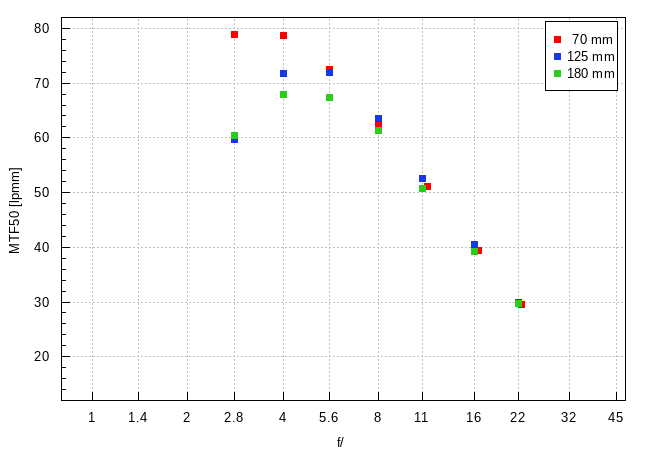
Please Support UsIf you enjoy our reviews and articles, and you want us to continue our work please, support our website by donating through PayPal. The funds are going to be used for paying our editorial team, renting servers, and equipping our testing studio; only that way we will be able to continue providing you interesting content for free. |
- - - - - - - - - - - - - - - - - - - - - - - - - - - - - - - - - - - - - - - - - - - - - - - -
You see at once that the producers focused on delivering the best results at the shortest focal length. Perhaps such a decision was motivated by the fact that the Tamron 28-75 mm f/2.8 Di III VXD G2 fared the weakest at 75 mm exactly so the engineers tried to ensure both lenses would be as compatible as it is only possible.
Of course you have to mention the fact that the results at 70 mm are really brilliant. Already at the maximum relative aperture you deal with resolutions of almost 79 lpmm and the tested lens reaches the peak of its possibilities at that point exactly. You can add that the result by f/4.0 is practically the same within the margin of measuring error. You have to admit at this point the tested lens fares noticeably better than the expensive Sony FE 70-200 mm f/2.8 GM OSS II but, in order to defend its rival a bit, you have to add that there's a different strategy behind its construction – its specialists focused on a better image quality at the longer focal lengths.
In the middle of the focal range the results of the Tamron 70-180 mm f/2.8 G2 are noticeably weaker; an especially big difference, compared to the 70 mm, is visible at the maximum relative aperture because now we get a result brushing against 60 lpmm, almost 20 lpmm lower than at the shortest focal length. The performance improves very quickly, though, and by f/4.0 and f/5.6 you see already resolution values reaching over 71 lpmm.
In this place the more expensive Sony model prevails decisively as it gets to 71 lpmm already at the maximum relative aperture and on stopping down the aperture it reached 80 lpmm.
The maximum focal length of the Tamron is the weakest but the differences, when compared to the middle of the range, aren't that crucial here. At the maximum relative aperture the lens still manages to achieve a good level of near 60 lpmm but this time it reacts a bit slower on stopping down and is able to get to just 68 lpmm. In this case the advantage of the Sony becomes even more pronounced because the more expensive model once again brushed against an excellent level of 80 lpmm.
Now let's check the Tamron's 70-180 mm f/2.8 Di III VC VXD G2 performance on the edge of the APS-C/DX sensor.
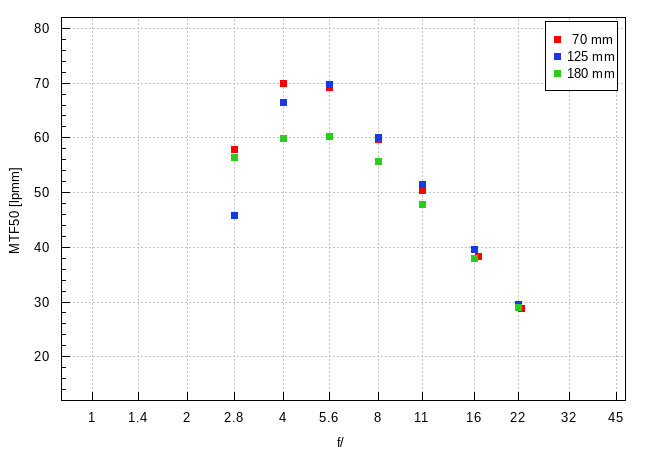
Here again the shortest focal length is the best and the Tamron can only be praised for its performance. Even at the maximum relative aperture you see a result of almost 58 lpmm so really good.
Interesting things happen at the 125 mm focal length where the maximum relative aperture lags behind all the rest. We got a result of less than 46 lpmm at this place so only slightly exceeding the decency level. Fortunately in this case the situation improves very quickly on stopping down the aperture - by f/4.0 the lens offers you already a decent result, exceeding 66 lpmm.
At the maximum focal length there are no longer such differences between the brightest apertures - at the maximum relative aperture you get a good result of 56 lpmm that increases to near 60 lpmm by f/4.0 and f/5.6.
In case of the edge of the APS-C the tested Tamron is able to compete efficiently with the more expensive Sony FE 70-200 mm f/2.8 OSS II only at the shortest focal length. At the longer end of the focal spectrum it loses the fight quite spectacularly.
Now let's check how the Tamron 70-180 mm f/2.8 G2 performs on the very demanding edge of full frame – the appropriate graph you can find below.
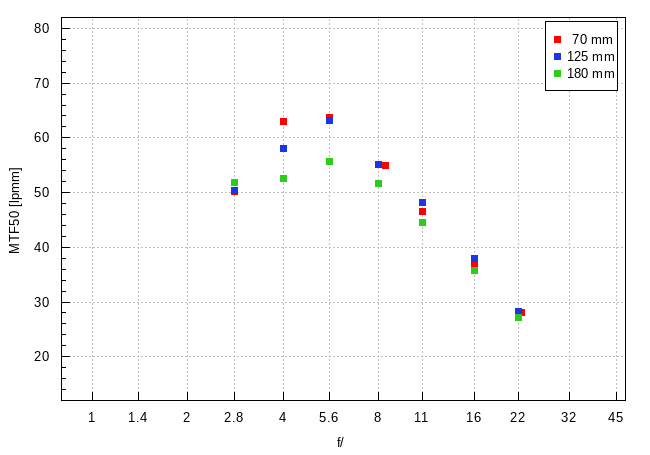
The situation is so interesting that, at the maximum relative aperture, all focal lengths fare basically the same and their resolution values slightly exceed a very good level of 50 lpmm. The lens doesn't have any weak points here. The shortest focal length reacts the best on stopping down, reaching the good level of almost 64 lpmm very quickly. In the middle of the range you can notice a bit slower increase because the maximum results hover around 63 lpmm; the lowest maximum results are recorded at the 180 mm, where the resolution level exceeds slightly 55 lpmm.
What about a duel with the Sony? The situation looks similar to the previous one. The Tamron slightly prevails at the 70 mm focal length but the Sony is noticeably better at the longer end of the focal spectrum.
To sum up, when it comes to resolution the tested Tamron 70-180 mm f/2.8 Di III VC VXD G2 fares very well, without any weak points. Still it could compete with the Sony FE 70-200 mm f/2.8 GM OSS II only at the shortest focal length. Of course you should remember that the Tamron is a lens two times cheaper so, taking this aspect into account, its performance should still be assessed very well.
At the end of this chapter, traditionally, we would like to present some crops taken from our test photos, saved as JPEG files alongside the RAW files, used for the analysis above.
| A7R IIIa, JPEG, 70 mm, f/2.8 |
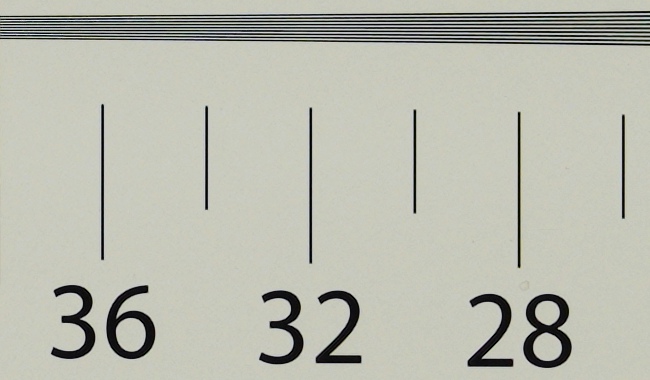 |
| A7R IIIa, JPEG, 125 mm, f/2.8 |
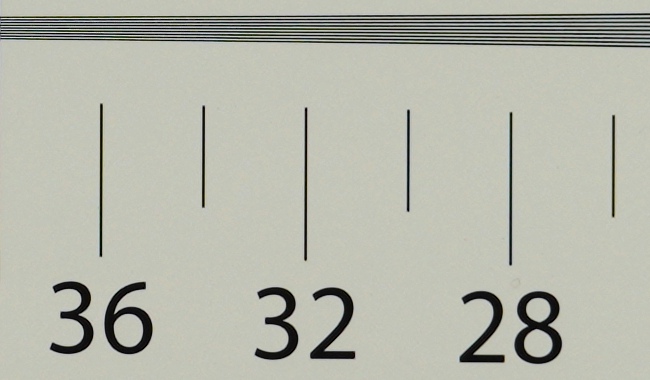 |






